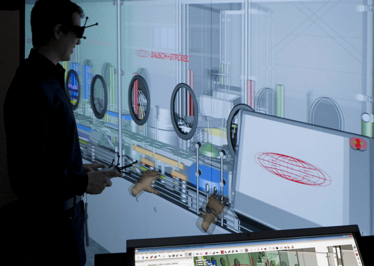The Machine Maker

As well as potentially changing the way things are done in pharma and biopharma manufacturing, could VR be useful in the design of manufacturing equipment? Bausch+Ströbel, a supplier of pharmaceutical packaging machines, created a “Virtual Reality Center” in 2011. We spoke with Thomas Bühler, sales group leader at Bausch+Ströbel, and Tobias Hörner, who is in charge of the company’s VR system, to get their take on how VR is revolutionizing machine making.
How did Bausch+Ströbel get started with using VR?
The automotive and aviation industries can be considered the pioneers of VR technology. Other industries, including the special machine building industry, have been using VR in marketing for quite some time already so it was only natural that it piqued the interest of several Bausch+Ströbel employees as we specialize in building machines! Some of our salespeople, engineers and students analyzed possible applications and the results of the analysis and a presentation of the system convinced our management of the potential benefits.
How is VR used within the center?
We are using VR in a number of ways, including: virtual mock-up studies, design reviews, safety studies, ergonomic studies, failure mode effects analysis, training, machine redesign assessments, computer-aided engineering and air flow visualization.
We also use the technology for marketing purposes, such as giving customer or trade show presentations. It can also be used for assessing animated processes.
How did employees react to the technology at the outset?
When we introduced the VR system, our customers and staff were quite curious. At the beginning, it was strange for everybody to work with a machine mock-up that they could not touch – it was a very different sensory experience. Still, the spatial view and fine details of the machine model were convincing and it wasn’t long before curiosity transformed into continued support of the technology. We’ve been working with VR for a few years now and there are benefits for our customers and us.
Benefits for customers:
- VR technology saves time in project work.
- Customers can get involved in early project planning.
- Our processes and work flows are more efficient and transparent to the customers.
- We found that the fault rate in virtual mock-ups was zero percent.
- Applying VR technology has been cheaper than any alternative technologies.
Benefits for our company:
- We can use the system to demonstrate machines that we have already built. As we offer a wide range of machinery, we often do not have real machines to show to potential customers.
- We can involve our customers more closely in the product development process, increasing their acceptance of our technological solutions.
- New design features can be tested and implemented much faster.



















